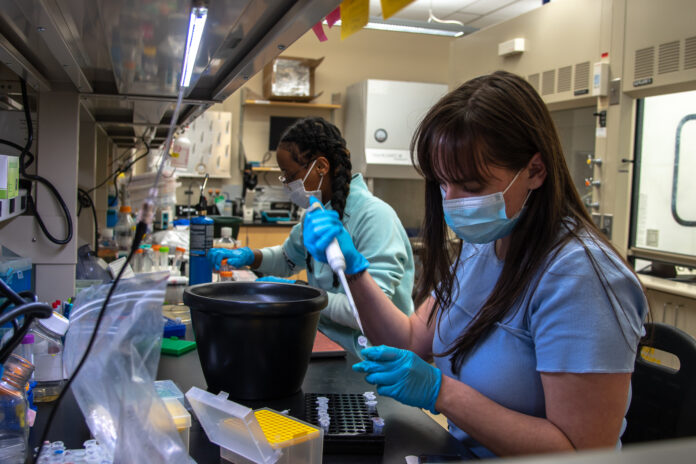
As Nevada’s new daily COVID-19 case numbers continue to fall, UNLV’s Wastewater Collection program recently released their most up to date analysis of COVID-19 levels in the city.
“All of the numbers have been trending in the right direction: down,” said Principal Investigator of the Wastewater Collection program, Edwin Oh. “We’re really pleased that what we’re seeing in the wastewater is something that we’re also seeing show up in human infections.”
Oh’s findings line up with Nevada’s current positive case numbers. As of Feb. 7, southern Nevada has 396 new daily confirmed cases, according to the Southern Nevada Health District. This is a noticeable improvement from the peak of the omicron wave in Nevada, where on Jan. 15, 2022, the state had 5,561 new daily confirmed cases with 222 new probable cases, according to Nevada Health Response.
Oh also noted that infections are still higher than him and his team would like them to be. However, he also said that some of these reported samples come from individuals that were already analyzed one to two weeks ago.
Despite the current drop in case numbers, Oh and his team found evidence that may still be cause for concern. This evidence is the concerning increase in omicron’s BA.2 subvariant in wastewater samples.
On Jan. 10, Oh and his team found a small presence of BA.2 in their collected samples, but in the following two weeks the subvariant seemed to disappear.
Oh said that this first sighting and its quick disappearance showed that the spike at the time was not sustainable, and could even be limited to one or two people in the test sample. However, a more recent spike in BA.2 detected on Jan. 31 that resembled the early days of the rise in dominance of omicron in early December.
“We want to be sure that this does not explode,” Oh said. “Because if it does, then it means that in two or three weeks, we’re going to see a large number of individuals with BA.2 infections.”
Oh said that the current numbers suggest that 5 to 10% of individuals in Las Vegas who have COVID-19, have the BA.2 subvariant.
When looking at what the future may look like, Oh said that the data may already be there.
“I feel like it’s best to use data to guide us,” Oh said. “And the data that we’ve seen from Denmark has been that BA.2 completely took over Omicron.”
According to the Statens Serum Institut, a Danish research institute specializing in fighting and preventing infectious disease, as of Jan. 20, BA.2 had more than doubled its presence among COVID-19 cases in Denmark. The subvariant rose from making up 20% of cases in the final week to 2021, to 45% of cases on Jan. 20.
Though many people seem to have gained immunity from the last wave of Omicron, Oh still warns that we should still remain wary of COVID-19.
“We’d like to think that with the immunity that many of us have gained from the recent infections,” Oh said. “That even if BA.2 is within our communities, a lot of us are going to be immune to it. But the bottom line is we just don’t know. That’s the reason why this thing, this virus, has kept us on our feet for so long. I think most of us want to sit down and say, ‘Okay, we understand this beast.’ Something happens, some mutation occurs in the virus and we learn something new.”
Going forward, Oh and his team have expanded their research to include stormwater, as well as wastewater. This expansion would allow the team to test for cases and variants within both the homeless population and possibly local wildlife.
